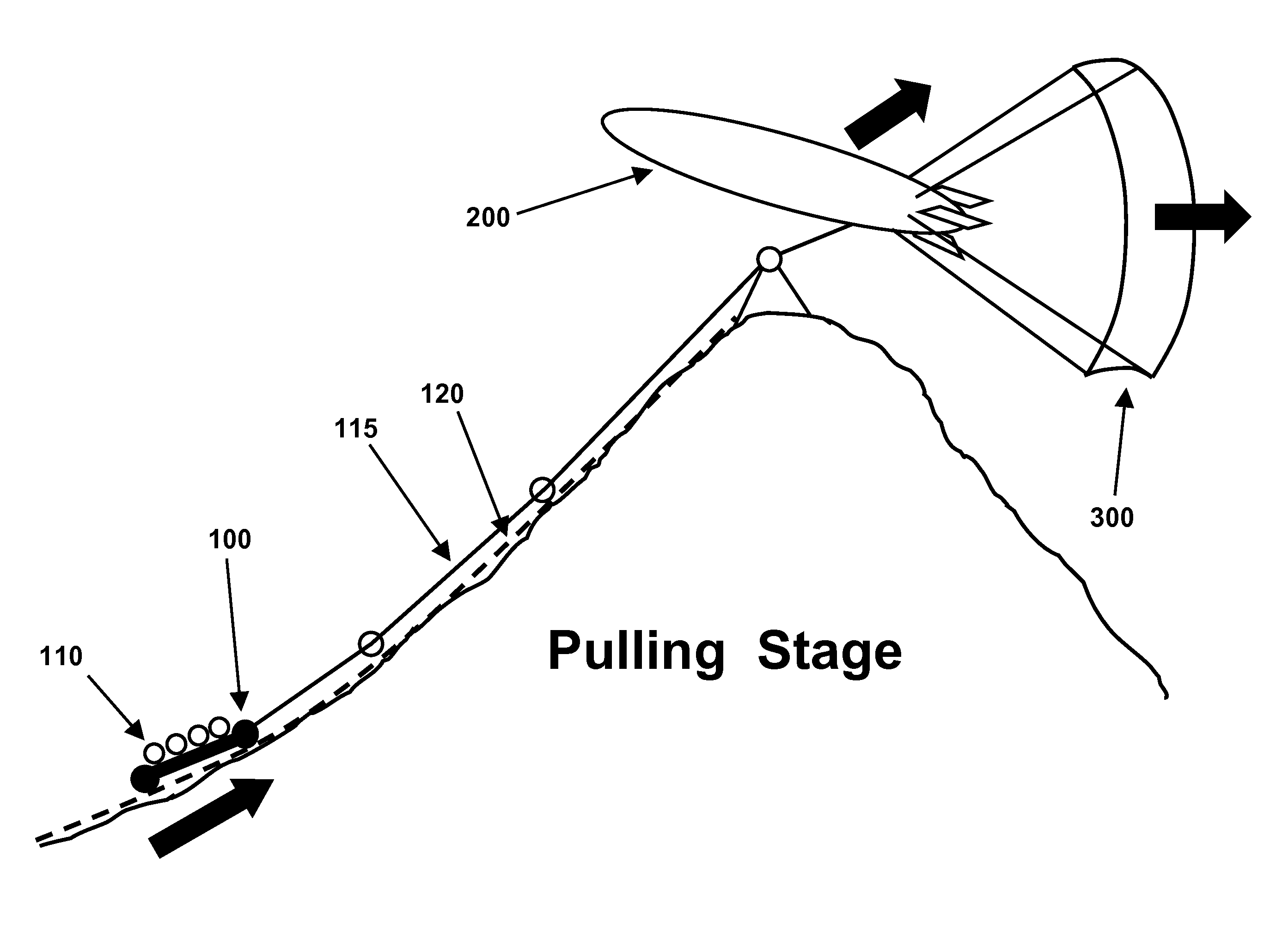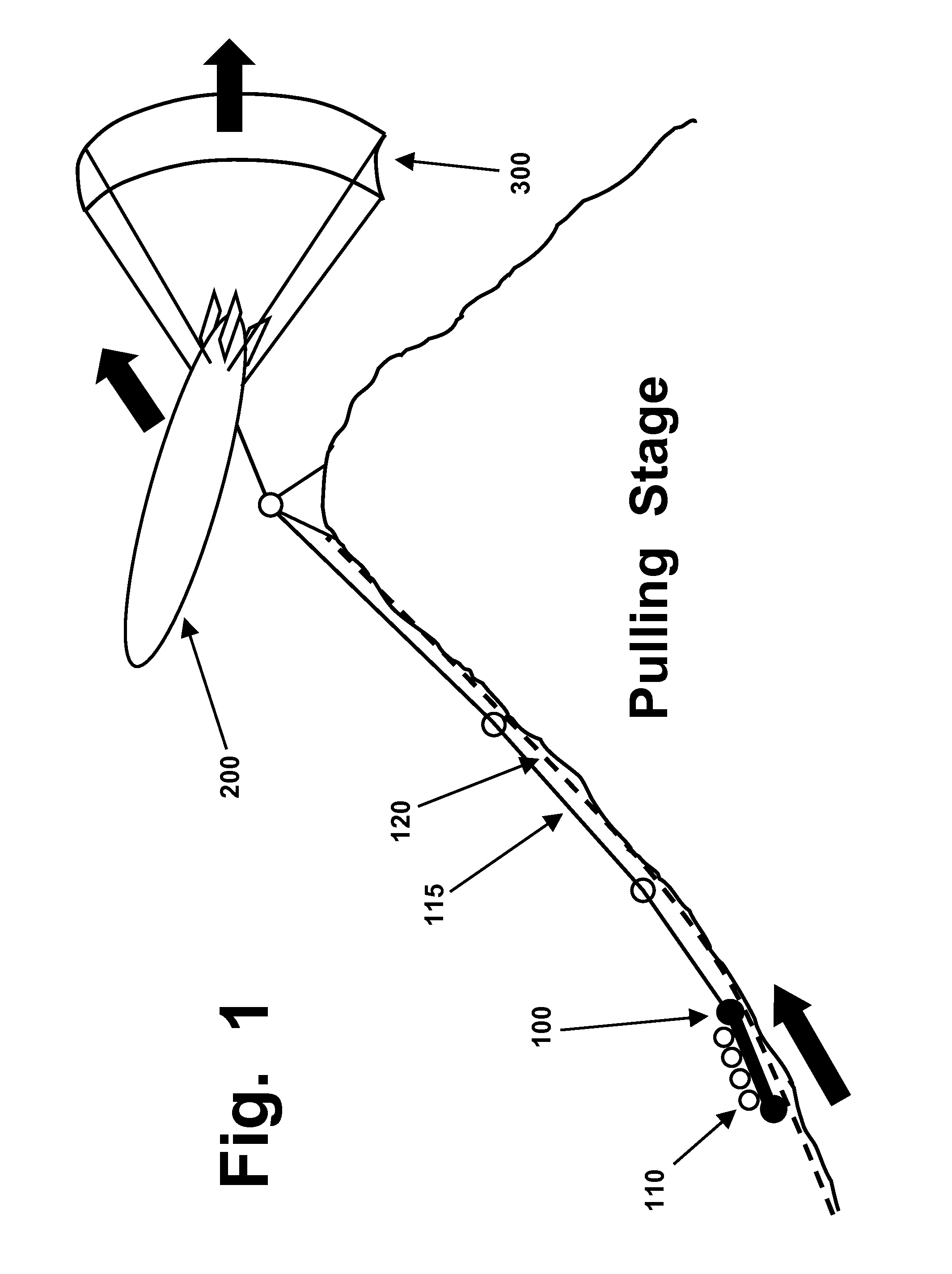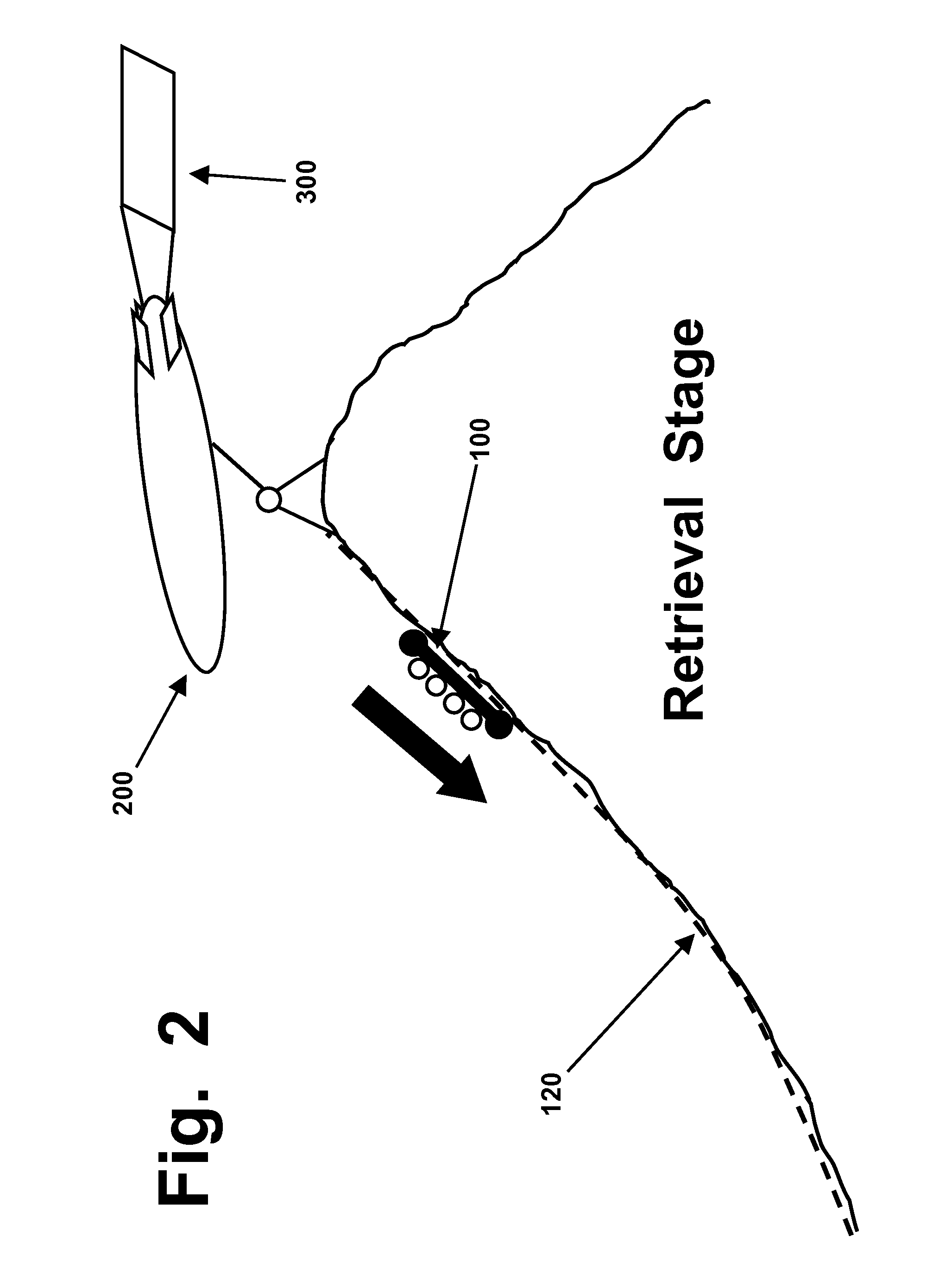The first glaring limitation of wind turbines becomes obvious from a simple glance at FIG. 3, or at any picture of any conventional wind
turbine.
A set of rotating
turbine blades requires that much room to operate, and nothing else can be positioned in, around, or near that “swept area”.
The “inefficiency factor” which requires attention at this point arises from the fact that the three blades of any conventional wind
turbine occupy only about 5% of the swept area.
That 90-degree misalignment seriously hinders the efficient capture of
wind power, by wind turbines; and, that misalignment problem acts along with the “95 percent empty space” factor in a cumulative and additive (rather than offsetting or compensating) manner, which further reduces the efficiency of 3-blade wind turbines.
Both of those two problems are inherent and unavoidable in the design of conventional wind turbines, and they stand squarely and stubbornly in the path of any efforts to achieve better efficiency levels, when wind turbines are used to generate
electric power.
That is a noble and useful task; however, a
fan blade segment with a round cross-section will not and cannot generate any torque to help drive the turbine and generate output power, regardless of how much wind blows against it.
Therefore, a significant zone at the center of a wind turbine contributes no useful
power output, and should be regarded as a “dead-weight overhead expense”.
The fourth problem which reduces the efficiency of wind turbines is referred to herein as “the low-torque middle” problem.
Similarly, if someone is trying to calculate where a car (or
fan blade) will be, at some point in the future, it is not enough to know where the car (or
fan blade) is located at some point in time, and that it is moving at 20, or 50, or 100
miles per hour.
Because the blades of a wind turbine act as levers, which are used to generate torque that will drive the rotation of a shaft, the inner portions of those turbine blades simply cannot generate more than a small fraction of the torque which is driving the rotation of the shaft.
For each and all of the reasons described above (which act cumulatively, and simultaneously, to decrease efficiency and output), wind turbines are limited to only a small percentage of the efficiencies that might be reached by other types of wind-capture devices.
Even though ropes made of natural fibers could be used as described herein, they will degrade much more rapidly, when used outdoors, than cables made of
synthetic materials suited for outdoor use.
Any fabric made from woven or knitted fibers will inevitably have some degree of permeability, to air and wind; however, since “tight weaves” are used to make sailcloth, and since the types of fibers used to make sailcloth tend to be “fluffy” when seen under a
microscope, in a manner which enables them to create nearly airtight seals between adjacent strands, permeability to air flow, in any conventional sailcloth material, is very low, and close to negligible.
Factors such as how much fabric was used to make the parachute, or how high its dome might extend when in use, will have no effect on its
projected area, and little if any effect on whether it will be able to safely hold and land a person or cargo
package having a certain weight.
However, the height of a parachute dome has essentially zero effect on how rapidly a person or item will descend, when hanging from that parachute.
However, narrow or rigid design parameters do not apply, when it comes to airborne spinnaker sails.
As used herein, the term “buoyant” is limited to airborne devices that contain a buoyant gas (i.e.,
hydrogen or
helium).
An elongated and streamlined
balloon, with external but non-moving fins and with nothing more than a
tethering attachment coupled to its
nose, would come closer to the definition of an “aircraft”, but it still would not qualify.
In addition, there are no clear and agreed-upon rules as to whether a blimp-type device could ever qualify as an “aircraft”, even if it is carrying tons of complex machinery, and even if it has plenty of flight-related machinery that can help it stay pointed in some desired direction, if it nevertheless is incapable of being flown independently, and must be kept tethered to a cable to prevent it from being blown away.
However, not all buoyant lifting devices need to be designed and operated as “machines” with multiple
moving parts.
However, that is not the conventional aeronautic use of the term “airfoil”, which refers to the cross-sectional shape of a wing, since that cross-sectional shape is crucial to how an
airplane wing will generate varying quantities of lift, when the plane is flying at a range of different speeds.
However, the Applicant is not aware of any kite
system ever being actually used, at any site which generated enough electric power to justify a connection to an electric
power grid run by a public utility.
In general, it is believed and asserted by the Applicant herein that “basic kites” which have not been expanded or incorporated into more complex lifting devices (such as gas-filled buoyant airbarges having certain kite-like features, as described herein) will never be well-suited for electric power generation, because of issues of
controllability and reliability, under the ranges of wind conditions that are likely to be encountered.
In general, the types of exceptionally powerful lift which are generated by the
metal-covered wings of a passenger jet (which must lift and carry a heavy cylindrical
fuselage that contributes little or no lift, to the jet) cannot be reached, or even approached, by a buoyant blimp, zeppelin, or similar aircraft which has a
skin made of a flexible fabric.
However, if a
tail structure or enlarged
fuselage is incorporated into a “flying wing” aircraft, it will begin to violate or at least veer away from the definition quoted above.
That type of motion is highly undesirable, because it can greatly reduce the speed and
fuel efficiency of an aircraft, and can make the
crew and any passengers motion-sick, and can impose unwanted and possibly dangerous and destructive forces on an
airplane traveling at high speed.
However, since the classic definition of “flying wing” refers to a “tailless” aircraft, a flying wing which has been given a
tail structure is no longer a true “flying wing”, and has become a hybridized aircraft.
 Login to View More
Login to View More  Login to View More
Login to View More 


